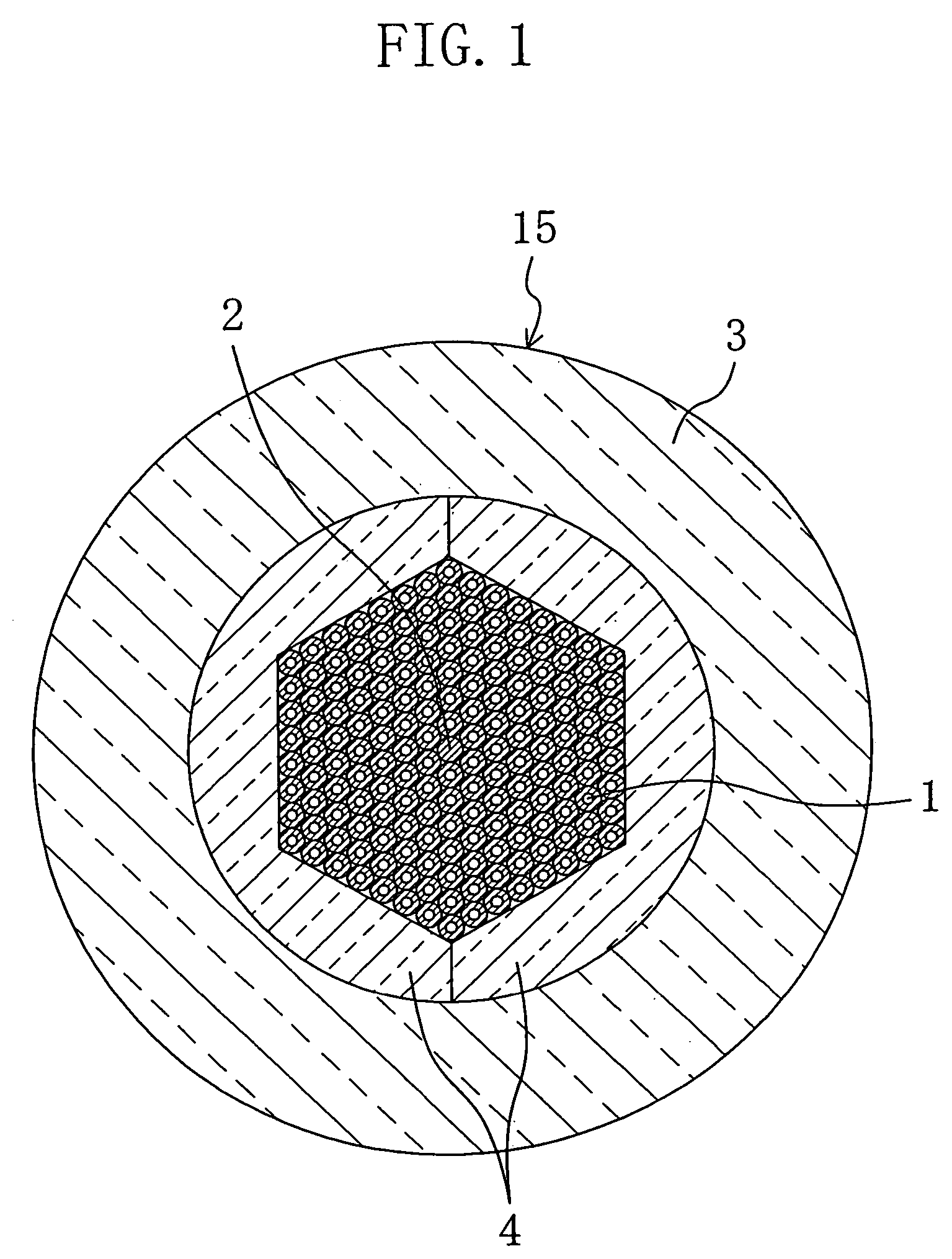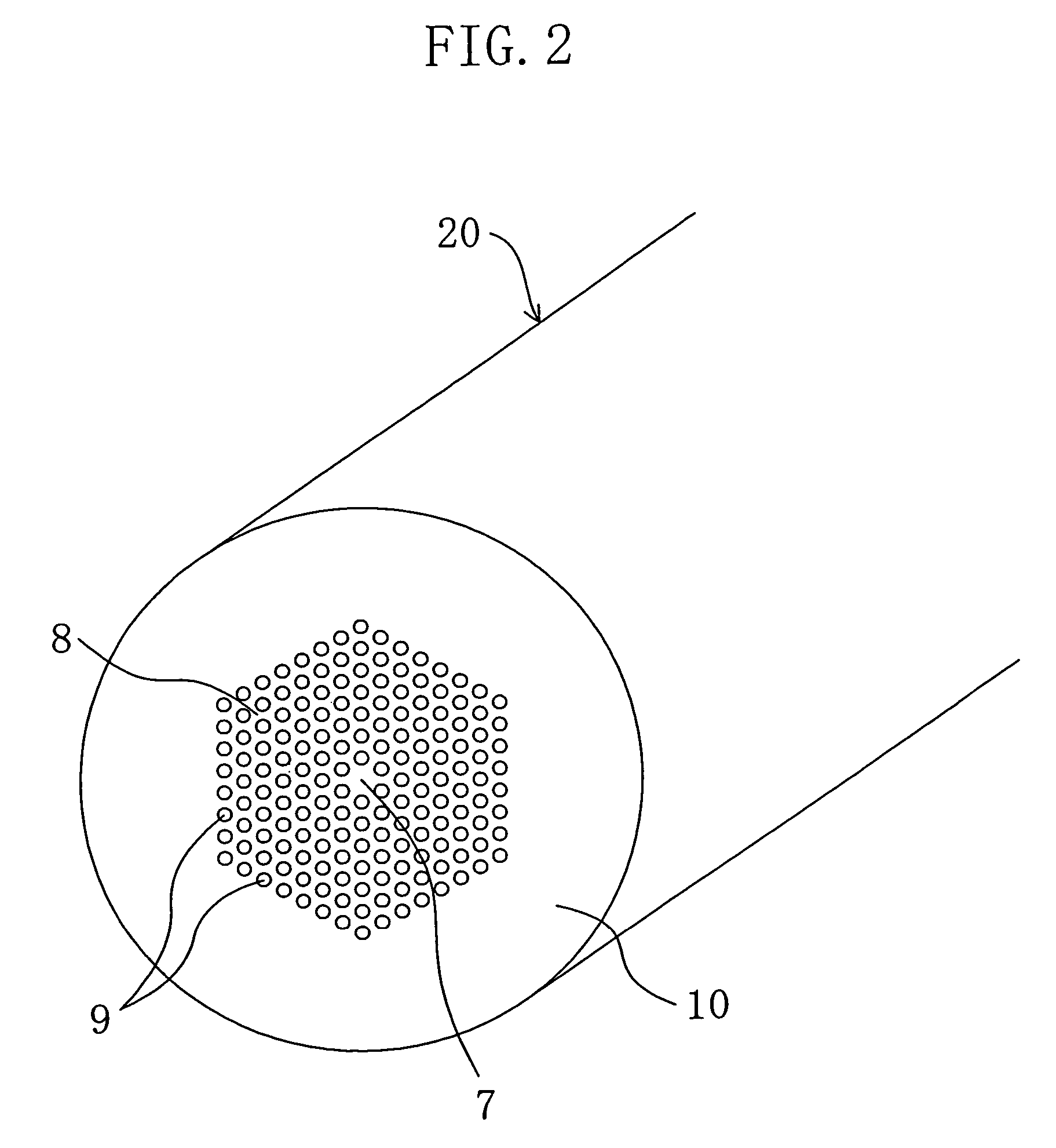Method for manufacturing photonic crystal fiber
a technology of photonic crystal fiber and manufacturing method, which is applied in the direction of manufacturing tools, optical fibers with polarisation, instruments, etc., can solve the problems of difficult to grind a columnar rod into a cylinder with great precision, and the technique is not suitable for fabricating a long pcf, so as to achieve easy recognition
- Summary
- Abstract
- Description
- Claims
- Application Information
AI Technical Summary
Benefits of technology
Problems solved by technology
Method used
Image
Examples
embodiment 1
[0034] Hereinafter, a step-by-step explanation is give of the method for manufacturing a PCF according to Embodiment 1.
[Preparation Step]
[0035] First, prepared are: a plurality of cylindrical quartz capillaries 1; a columnar core rod 2 which is made of quartz and has the same outer diameter and length as those of the capillaries 1; a large-diameter cylindrical support tube 3 which is made of quartz and has the same length as that of the capillaries 1 and a pair of spacer parts 4 made of quartz and has the same length as that of the support tube 3.
[0036] The spacer parts 4 are half parts of a cylindrical tube which are cut along the circumference direction. The inner wall surface of each of the spacer parts 4 is shaped to have a half of a regular hexagonal cross-sectional shape. In this embodiment, two spacer parts 4 are paired. The cross-sectional shape of the inner wall surface of the spacer 4 is so designed that among the capillaries 1 which are closest packed in the spacer 4 t...
embodiment 2
[0051] Hereinafter, a step-by-step explanation is give of the method for manufacturing a PCF according to Embodiment 2.
[Preparation Step]
[0052] First, prepared are: a plurality of cylindrical, small-diameter capillaries 1 made of quartz; two cylindrical, quartz-made structure-indicating capillaries 6 of a small diameter which indicates the inner structure of the fiber; two cylindrical, quartz-made polarization maintaining capillaries 5 of a large diameter; a single columnar core rod 2 which is made of quartz and has the same diameter and length as those of the capillaries 1; a cylindrical, quartz-made support tube 3 which is shorter than the capillaries 1 and the core rod 2; and a pair of spacer parts 4 which are made of quartz and have the same length as that of the support tube 3.
[0053] The spacer parts 4 are halves of a cylindrical tube cut along the circumference direction and each of the spacer parts 4 has an inner wall surface which forms a half of a regular hexagonal cross...
PUM
| Property | Measurement | Unit |
|---|---|---|
| length | aaaaa | aaaaa |
| degree of freedom | aaaaa | aaaaa |
| diameter | aaaaa | aaaaa |
Abstract
Description
Claims
Application Information
 Login to View More
Login to View More - R&D
- Intellectual Property
- Life Sciences
- Materials
- Tech Scout
- Unparalleled Data Quality
- Higher Quality Content
- 60% Fewer Hallucinations
Browse by: Latest US Patents, China's latest patents, Technical Efficacy Thesaurus, Application Domain, Technology Topic, Popular Technical Reports.
© 2025 PatSnap. All rights reserved.Legal|Privacy policy|Modern Slavery Act Transparency Statement|Sitemap|About US| Contact US: help@patsnap.com



